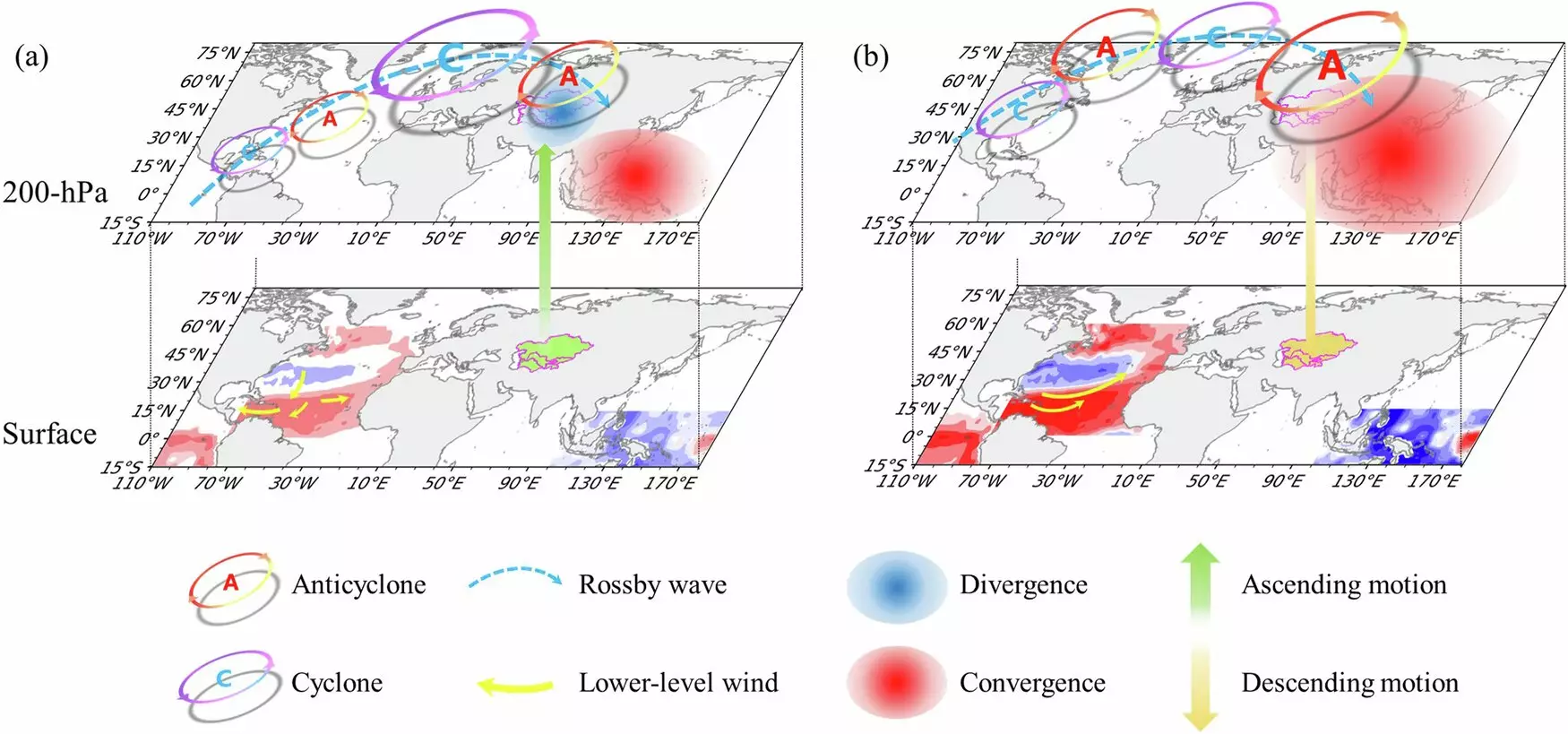Central Asia, a sprawling area comprising Kazakhstan, Uzbekistan, Turkmenistan, Kyrgyzstan, and Tajikistan, is characterized by its vast semi-arid landscapes and distinctive continental climate. This region faces significant challenges regarding its delicate ecological balance, which is heavily influenced by varying precipitation patterns. Given its dependence on agriculture, the timing and reliability of rainfall, particularly during the spring season, can have a profound impact on both the economy and the overall welfare of its inhabitants. Understanding these precipitation patterns becomes vital for effective resource management and agricultural planning.
One of the key climatic phenomena affecting rainfall in Central Asia is the El Niño-Southern Oscillation (ENSO), which plays a critical role in shaping weather patterns around the globe, including in this region. Traditionally, periods marked by El Niño events, which usually occur during winter, have been associated with increased moisture flow into Central Asia, thereby enhancing the likelihood of above-average precipitation. This relationship has been recognized for many years, enabling researchers and policymakers to devise adaptive strategies in anticipation of these climatic shifts.
However, recent research from the Institute of Atmospheric Physics of the Chinese Academy of Sciences has revealed that this vital link is not static; rather, it has undergone considerable fluctuations over the decades. The researchers’ findings, published in the journal npj Climate and Atmospheric Science, indicate that the ENSO-spring precipitation connection has weakened significantly since the 1930s, experienced a period of strengthening until the late 20th century, and is currently witnessing a resurgence since the early 2000s.
The study highlights two primary factors that elucidate the interdecadal changes in the ENSO-spring precipitation relationship in Central Asia. The first relates to the meridional pathways through which Pacific sea surface temperature anomalies exert their influence. When strong El Niño events occur, they prompt noticeable upper-level divergence in the atmosphere over the central-eastern Pacific, extending their effect into Central Asia. This dynamic fosters vertical movement in the atmosphere, leading to increased precipitation. However, weaker ENSO correlations result in less pronounced atmospheric responses, thus diminishing rainfall levels.
The second significant factor is the impact of North Atlantic sea surface temperature anomalies during the spring time following an El Niño event. Characterized by a distinct cold and warm anomaly pattern in different parts of the Atlantic, these fluctuations can significantly disrupt the beneficial effects that El Niño might impart to Central Asia. This phenomenon underscores the complexity of climatic interactions at play and their potential implications for regional rainfall patterns.
What drives these North Atlantic sea surface temperature anomalies, particularly during periods of weak correlation between ENSO and spring precipitation? A primary driver appears to be the prevailing wind patterns. The rate at which El Niño events decay is crucial as it influences the wind patterns that, in turn, shape sea surface temperatures in the Atlantic. For instance, during periods of positive Pacific Decadal Oscillation (PDO), a slower-decaying El Niño correlates with pronounced North Atlantic temperature contrasts, countering the precipitation benefits typical of El Niño events. Conversely, the negative phase of the PDO seems to ameliorate this relationship, strengthening the connection between ENSO and precipitation.
The implications of these findings are significant for stakeholders engaged in agriculture, water resource management, and climate forecasting in Central Asia. As the study indicates, the relationship between ENSO and spring precipitation has shown a discernible trend toward greater predictability since the early 2000s, thereby providing a more reliable basis for seasonal forecasts. This is particularly important in a region where water and agricultural resources are critically interlinked with climatic variability.
Comprehending the intricate dynamics behind the influence of ENSO on Central Asia’s spring precipitation is essential for informed decision-making amid the challenges posed by climate change. As researchers like Prof. Huang Gang emphasize, these insights are invaluable for improving climate prediction methods and enhancing the resilience of communities in this arid region, facilitating better preparedness against the uncertainties of climatic fluctuations.

